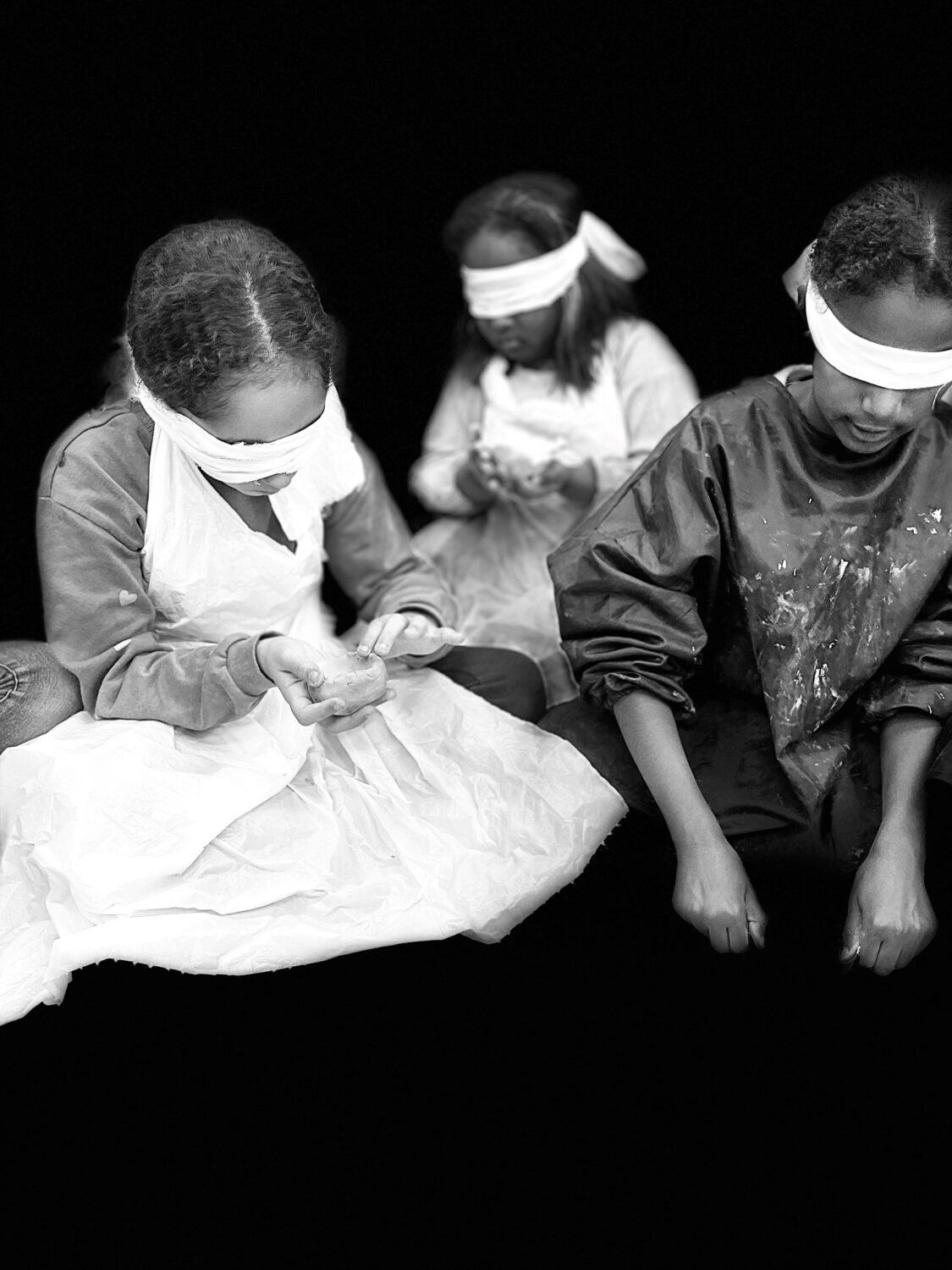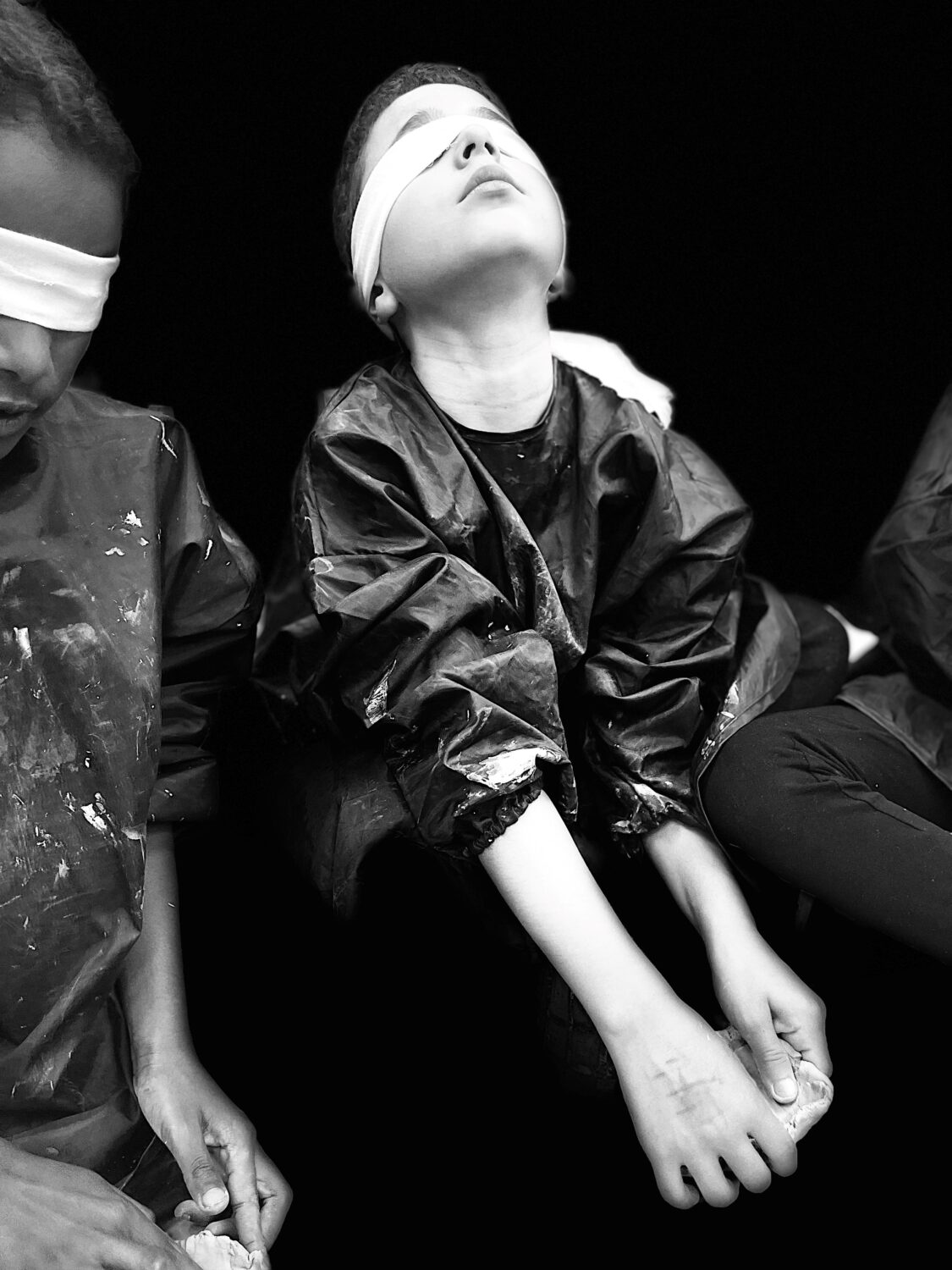‘You might think of it as learning to make a new dish,’ says Anne Kirketerp. ‘It might be really helpful to follow a recipe, and if you’ve never tried it before, it’s nice to have someone explain the process to you, step by step.’
With this cooking metaphor, Anne Kirketerp is referring to the artist in-residence programme. Under this programme, a practising artist or maker visits a school for a period of time and works directly with the students to give them experiences with the creative field. She is enthusiastic about the programme but points out that a successful residence requires careful planning.
‘You can’t conclude that children automatically do better because they are taught by an artist or a maker. If the structure is too loose, the children might struggle to understand what they’re supposed to do and what they’re supposed to take away from it. For the artist in-residence programme to be effective, it has to be carefully planned, like a recipe,’ says Anne Kirketerp.
I am speaking to Anne Kirketerp on the phone. Originally, she trained as a maker and textile craft teacher at Skals Håndarbejdsseminarium (Skals Textile Craft College) specializing in weaving and knitting. Later, she studied psychology and earned a PhD, which makes her Denmark’s only scholar specializing in craft psychology. Simply put, her focus is on the mental benefits of working with our hands.
I rang Anne Kirketerp to ask her to explain what craft psychology is, and how the artist in-residence programme might help promote well-being for schoolchildren.

Getting into the flow
‘I use the English word “craft” [in Danish] because it covers both artistic and more technical pursuits, but essentially, it’s about engaging in activities where we use our hands,’ Anne Kirketerp explains.
‘Craft is connected to our mental health in the sense that while we are working with our hands, we can enter a flow experience, where we are so engaged in what we’re doing that we forget ourselves. In a way, it gives us a break from ourselves.’
This flow experience is just the first step in the approach used in craft psychology.
The next point is about calm, says Anne Kirketerp.
‘While you’re working with your hands, you are focused and you’re carrying out repetitive movements. This leads to deeper breathing. You see the same phenomenon when people use prayer beads in a religious context. Handling a tangible object while repeating the same motion over and over produces a valuable tactile experience.’
Performance is a third essential aspect of handwork.
‘We have a need to show the world and ourselves that we have produced something,’ says Anne Kirketerp – like a home-knit jersey or a home-baked loaf of bread.
‘We show the world that we have learned something and that we are able to manifest ourselves. That is hugely significant.’
Using our hands also provides cognitive stimulation.
‘You translate mental images into three-dimensional form. Past and future are combined, which stimulates your mind.’
Building new neural pathways requires constant challenges, and when we use our hands we give our brains a workout. That is healthy and is also an essential element of rehabilitation after an injury.
‘Pretty much the worst thing you can do is to sit down and relax,’ says Anne Kirketerp. ‘Using your hands makes a huge difference, and it can also help you build new relations when you meet with others around a craft or a hobby.’
The fifth key aspect of craft psychology is ‘positive emotions’, Anne Kirketerp’s general term for the hope, joy, humour and sense of relaxation that we might experience when we are absorbed in a manual task.
‘As human beings, we are four times more likely to emphasize negative aspects. This is crucial to our survival, since we need to be aware that a block of cheese that is green with mould is actually toxic to us,’ Kirketerp explains. ‘We need to be able to feel both anxiety and fear, but it is important for us to engage with positivity as well, to avoid getting caught up in a negative spiral in terms of well-being.’
You cannot knit your way out of a crisis, Anne Kirketerp underscores, but if you have done everything you can, and you find that you are still worrying about your children’s future or nuclear war, engaging in a manual task can offer a source of joy.
Boosting brain power
Might we even improve our health if we use our hands more?
‘Yes, studies in craft psychology have documented that. You don’t need to cover all five aspects I mentioned, but if you can spend half an hour to an hour a day doing something where you use your hands, that can have an emotional impact.’
And that brings us to the topic of schools, where traditionally, the students who struggled academically ended up learning a manual trade. Today, we are gradually coming to acknowledge that manual labour holds value in itself, and that mastering a manual craft might even boost our brain power.
‘In Finland, children in years three to six have six weekly lessons dedicated to creative subjects. It enhances their “meta-ability” to engage physically with complex tasks. Evidence shows that they use their entire brain when they do this, compared to doing maths problems on paper, which only activates parts of the brain.’
In recent years, Danish education policy has increased the focus on physical activity in schools, and that is great, says Anne Kirketerp. However, it would be nice to see a similar emphasis on creative subjects.
‘The scientific evidence in this area is still limited, but just as we know that physical activity is not just about having the kids run up and down the school corridors but has to involve targeted challenges, we also need a deliberate approach to the creative disciplines.’

Strategy is a key part of a good artist in-residence project
‘It is important to have a specific plan for creative activities with children. I speak of a “craft intervention”, where you guide children through a process, step by step, so they develop knowledge about techniques, methods and materials.’
That may sound technical and very controlled, but it is important to have a strategy to ensure that children have a success experience when they work with their hands.
‘That may really be the main challenge for an artist in-residence,’ says Kirketerp. ‘You have to determine what the success criterion is, and you have to realize that teaching craft and design is not easy. It is really hard.’
With a good strategy in place and a step-by-step approach, Anne Kirketerp believes that the artist in-residence programme can be valuable.
‘It’s great that we’re giving children the tools they need to work with their hands and engage at both abstract and concrete levels. That will benefit their mental well-being, which is a key policy priority right now.’
So if it is handled the right way, the artist in-residence programme may be an important element in showing children the value of creative pursuits?
‘Yes, I am convinced of that. We need tools to help enhance mental well-being and offer solace in certain contexts,’ says Anne Kirketerp.
After pausing briefly, she adds, ‘Our new minister of education, Mattias Tesfaye, is very interested in handwork, which I welcome. But it’s important to plan it in a way that it not only has a positive impact on creative subjects but also on our mental well-being.’
Crafts psykologi
Anne Kirketerp is a crafts artist, needlework teacher and psychologist, Ph.D.
In the book ‘CRAFT PSYCHOLOGY – Health-promoting effects of needlework and crafts’, she has summarized the knowledge about the positive effects of doing craft.
Theme: Artist-in-residence
Formkraft will examine why artist in-residence partnerships between organizations and makers/designers are not more common.
What challenges do practising makers and designers face once they have been approved for a residency? How is the partnership between the maker/designer and the host organization established? What do makers and designers think of the application process? And how do the approved projects benefit makers and designers, host organizations and the children and young people they work with?
More knowledge in the Archive
Search the archive on Formkraft for additional knowledge.
Sign up for newsletter
Receive information about new articles on contemporary Danish crafts and design. We send out newsletters every second month. Sign up here


